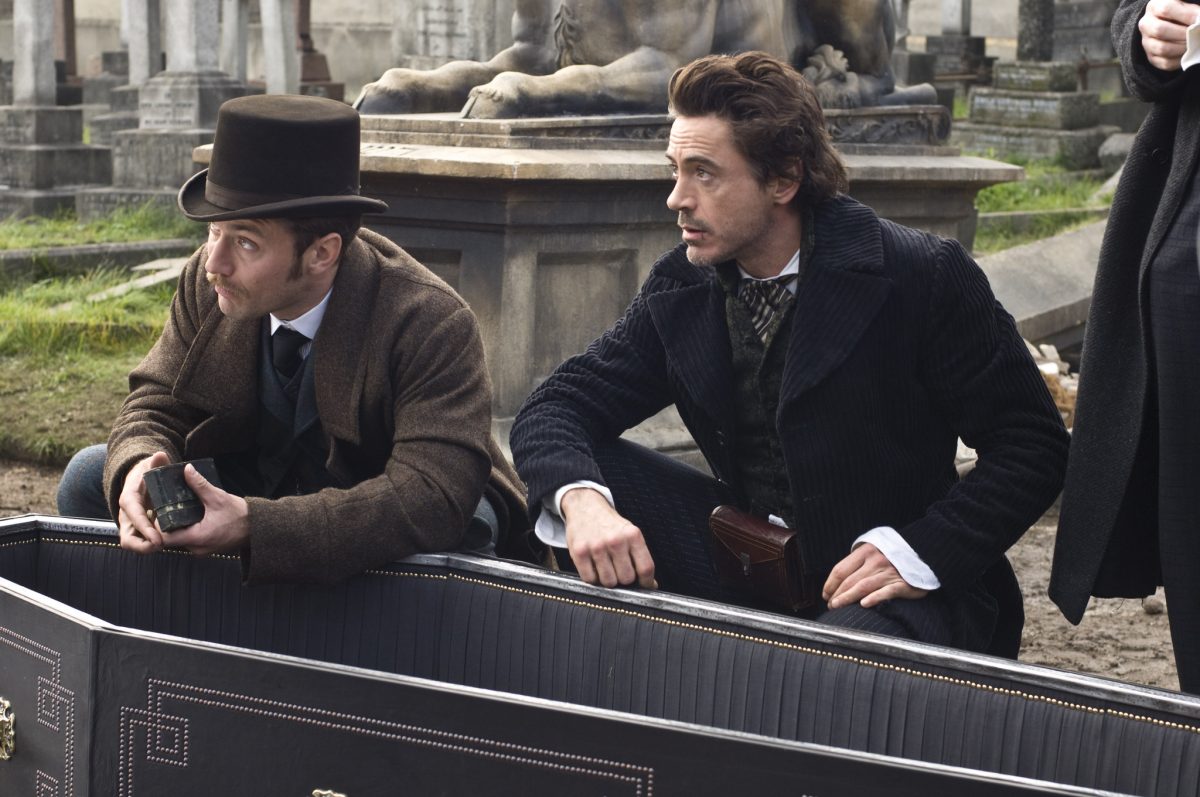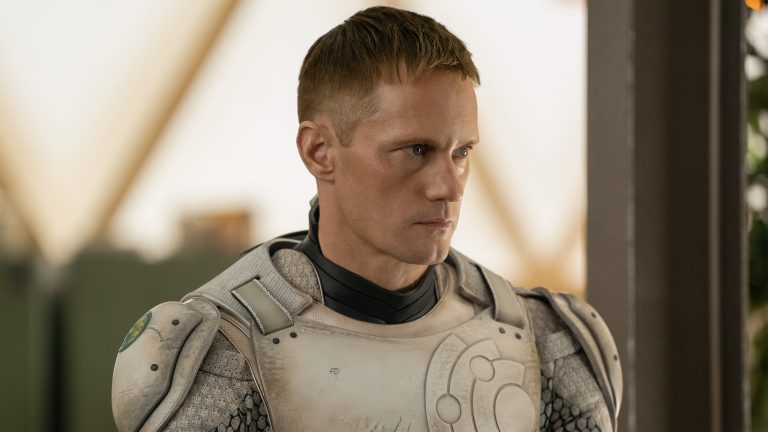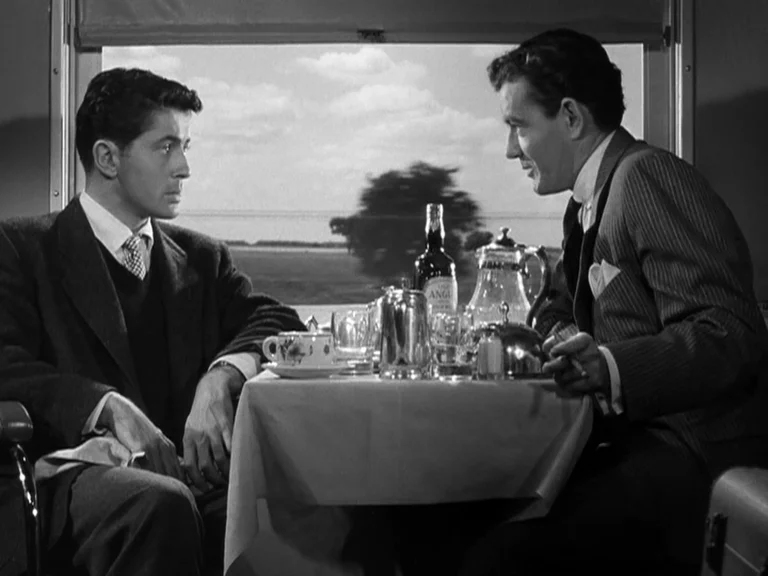Guy Ritchie’s Sherlock Holmes (2009) recasts Arthur Conan Doyle’s iconic detective as both a razor-sharp logician and a restless man forever negotiating the line between science and superstition. The film begins with Holmes thwarting Lord Blackwood’s ritualistic murder—a triumph that almost immediately unravels into a labyrinth of deception and manipulation. The true tension isn’t whether Holmes will crack the case—his brilliance is never in doubt—but whether reason itself can endure in a society seduced by fear, spectacle, and the lure of the supernatural. When Blackwood seemingly rises from the grave after his execution, the central enigma emerges: is he a master of dark arts, or merely a master of illusion?
Sherlock Holmes (2009) Plot Summary & Movie Synopsis:
In 1890 London, Sherlock Holmes and Dr. John Watson apprehend Lord Henry Blackwood, a nobleman and serial killer who cloaks his crimes in occult rituals. Though executed by hanging, Blackwood seemingly rises from the grave, terrifying London. His warning to Holmes, that three more will die, comes true as members of a secret magical fraternity, the Temple of the Four Orders, begin to perish. While Holmes is captivated by the task at hand, he is also unhappy about Watson’s forthcoming marriage to Mary Morstan.
At the same time, Holmes finds himself drawn into the orbit of Irene Adler (Rachel McAdams), a mysterious woman who had previously outsmarted him and has now come to work for an unknown professor’s directives. Holmes and Watson discover that Blackwood’s supposed sorcery is, in fact, a sociological concoction of staged phenomena, science, chemicals, and fear. In the climax beneath Parliament, Blackwood plans to gas hundreds of people at once with cyanide gas, all in the name of controlling an even more powerful grip.
Did Blackwood Truly Possess Supernatural Powers?
The film repeatedly toys with the idea that Blackwood is more than human. He survives his hanging, kills from a distance, and stages fiery displays that terrify his enemies, but Holmes methodically dismantles the illusion. Blackwood’s survival after the hanging is explained by a hidden harness and a strategically broken hyoid bone.
The fire that engulfs Ambassador Standish results from a pistol rigged with phosphorous chemicals. Even the drowning of Sir Thomas Rotheram is revealed to be nothing more than mechanical sabotage. In the end, Holmes proves that Blackwood’s power lies not in the supernatural but in exploiting the human tendency to believe in it. His true genius is psychological warfare—using spectacle and fear to command loyalty.
What Role Does Irene Adler Play?
Irene Adler is both an ally and a distraction. She hires Holmes to track Luke Reordan, whose scientific experiments enable Blackwood’s tricks. But Holmes quickly realizes Adler is working for another man: Professor Moriarty. Her actions reveal a larger game. While Holmes pursues Blackwood, Moriarty uses Adler as bait to draw Holmes into the shadows. At Tower Bridge, Adler disables Blackwood’s cyanide machine, but she is also manipulated into delivering the missing component to Moriarty. Holmes saves her, but her warning is clear: Moriarty is far more dangerous than Blackwood ever was.
How Does Watson’s Role Shape the Story?

Watson grounds Holmes. While Holmes dives into obsession, disguises, and erratic investigations, Watson insists on reason, stability, and loyalty. His engagement to Mary threatens Holmes with abandonment, but Watson proves he is not leaving Holmes behind—only redefining their bond. In the climax, Watson’s courage nearly costs him his life when he’s injured in the explosion beneath Parliament. His steadfast partnership, however, makes Holmes’ victory possible. The film subtly shows that Holmes may solve the puzzles, but Watson ensures he survives them.
Sherlock Holmes (2009) Movie Ending Explained:
Science vs. Superstition
The ending confirms that Blackwood never possessed supernatural powers. His reign of fear depended on chemistry, machinery, and human gullibility. Holmes’s deductions expose the fraud, restoring reason over superstition. Yet the true resolution lies in the revelation of Moriarty. By stealing advanced radio technology under the cover of Blackwood’s theatrics, Moriarty establishes himself as Holmes’ ultimate adversary. The “case” isn’t solved—it has only expanded. So, did Blackwood commit the impossible crime of returning from the grave? No. His power was an illusion, not a resurrection. The real danger, as Holmes realizes, is the man lurking behind the curtain: Professor Moriarty, a mind as brilliant as his own, waiting in the shadows for the next move.
What Does the Ending Reveal About Blackwood’s Defeat?
At Tower Bridge, Holmes confronts Blackwood and reveals the truth: every act of sorcery was a carefully staged trick. In the end, it is not Holmes’ fists but his deductions that trap Blackwood. Entangled in chains, Blackwood hangs to his death—truly executed this time. But the final twist reframes the story. The real mastermind is not Blackwood but Moriarty, who orchestrated the chaos to steal a key radio component from Reordan’s device. Blackwood was only a pawn, a magician’s illusion to distract Holmes from the larger threat.






